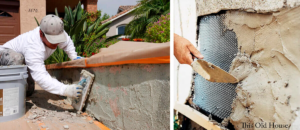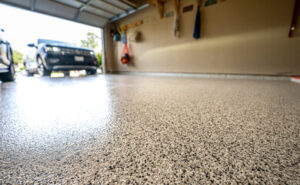When it comes to window shades, there’s a world of options that look beautiful and offer a wide range of functionality. From woven wood shades that add a natural element to the living room to energy efficient cellular shades that provide privacy and light control, there are many choices.

Blinds have slats that can be tilted to adjust light and privacy. They are great for homes with children or pets because they can be easily dusted and cleaned. Visit https://www.customblindsandshadesky.com/ to learn more.
Diffuse natural sunlight, allowing the soft glow of the sun to illuminate your home while protecting furniture and flooring from harmful UV rays. These window treatments reduce glare and help to prevent your home from overheating and are available in nine customizable options, including Solar Shades, Roller Shades, Roman Shades, Woven Wood Shades, Cellular Shades and Drapes.
These custom window shades are available in a range of opacities from semi-transparent delicate options to opaque materials that block up to 99% of UV rays. They are the ideal option for homeowners who want to enjoy the benefits of natural light without sacrificing privacy and comfort.
Unlike traditional hard blinds, which are only opaque when closed, Light Filtering Roman Shades and Woven Wood Shades achieve different levels of transparency with the addition or removal of a lining. When layered, these window treatments offer a sophisticated and opulent look while maintaining a comfortable level of brightness in your home.
Cellular shades, such as Hunter Douglas Vignette Duolite, allow natural light to enter your home while reducing heat and cold by trapping air inside built-in cellular pockets. These double-layered window treatments also come in light filtering and room darkening options and offer a sleek, minimalist design that suits any decor. For additional light control and energy efficiency, choose the day/night option to combine a sheer and room darkening fabric on one shade.
Motorization
Motorized blinds offer a more convenient, safe and modern way to dress your windows. Available on cellular, pleated, roman, sheer shades and roller options, they operate without cords for a clean, streamlined look that’s especially great for homes with children.
These window treatments are operated by a motor that can be rechargeable, hardwired or plug-in depending on the brand. Motorized blinds can be controlled with a handheld remote-control option, a wall mount control or through smart home integration (depending on the brand).
Smart shades offer advanced automation that allows you to create schedules that raise and lower shades at set times throughout the day. They can also adjust based on sunlight, temperature and light conditions for energy efficiency, security and privacy.
You can easily pair motorized blinds with custom soft fashion draperies to craft a beautiful, layered style. Motorized shades are especially well suited for large windows, such as those in a kitchen, office or tall living room. They eliminate the need for manhandling, reducing wear and tear and helping to extend their life. They are perfect for out of reach windows and can help solve common issues such as unevenly raised or stuck blinds.
Energy Efficiency
If you’re looking to add style and functionality to your windows, consider pairing your blinds with shades that offer additional functionalities like energy efficiency. For instance, cellular shades are available in different pleat sizes that help them trap more hot or cold air depending on the weather. This feature, coupled with the honeycomb construction that helps prevent cold and hot air from seeping in and out of your window, makes cellular shades the most energy efficient type of shade on the market.
The thickness of the slats of standard blinds and shades also plays an important role in their ability to keep heat from escaping through your windows. If you’re interested in maximizing the energy efficiency of your window treatments, opt for a slat depth that’s closer to an inch or less. Also, consider motorization options for your blinds and shades to set timers and schedules that automatically open and close them at optimal times for energy savings, and pair with smart home solutions for easy control of your window treatments from your smartphone or smart home voice commands.
Whether you’re interested in boosting your energy efficiency or just want a more versatile look, the new hybrid shades and blinds that combine slats with fabric can give you the best of both worlds. For example, our popular Serenity sheer shades have a layer of fabric “slats” that tilt, similar to traditional blinds but are held together with fabric rather than metal hardware. This allows you to easily control light and privacy.
Insulation
The type of window treatment you choose depends on the visual style you prefer as well as the experience you want in the space. Blinds and shades are great for sculpting patterns of sunlight to create the feeling you want in your home, such as warm and cozy or sleek and modern. They can also be used to block out light and add privacy.
Unlike drapes or curtains, which hang below the window sill, shades are sized to fit within your window frame and are hung above it. To let in light and view the outdoors, you simply raise the shade using a cord, roller or lifting hardware. As it raises, the shade bunches or rolls around a rod, depending on the shade’s style. Shades are effective insulators thanks to their fabric “slats” or the honeycomb pockets they have, helping to keep your home at a more temperate temperature and possibly saving you energy costs over time.
Some shades can even provide a complete blackout when combined with a privacy or blackout liner. They’re a great option for bedrooms and other rooms you want to be dark when needed. Blinds allow for more airflow and are not as effective insulators, but they can be made with slats that tilt open to let in natural light and increase privacy. Blinds can also be found in many materials including genuine wood, faux wood and aluminum.
Privacy
There are a wide variety of window shades to choose from. Some are made from soft fabric while others are more rigid and structured like woven woods. Blinds and shades serve different purposes, but both can add functionality, privacy and style to a room. It’s important to consider your needs and design goals when deciding between shades and blinds.
Blinds are hard window coverings with slats or vanes that can be tilted for light control and privacy. They can be crafted from wood, faux wood, metal, composites or woven grass. Blinds are typically more durable than shades and require less maintenance. They can be lowered or raised to block out sunlight and are a great choice for most rooms in the house.
Shades are soft window treatments that offer a more translucent look than blinds. They’re available in a wide range of styles from roller and solar screen shades to cellular and roman shades. Some are more opaque than others, but most provide a level of privacy while still filtering light and adding warmth to a space.
While they don’t have the fine-tuned light control of blinds, shades are a great option for those who want to block out light and add privacy. They can be lowered or pulled up to block out sunlight and are a good choice for bedrooms and media rooms. Many shades can also be layered with drapery for additional light control, insulation and privacy.
Safety
Shades and blinds come in many different styles and materials, giving homeowners a wide array of options when choosing window treatments for their home. To decide which option is best for you, consider your privacy needs, the amount of sunlight you want in a room and whether you prefer to open or close your window coverings often.
The most important aspect to consider is safety. Blinds and shades with cords present a strangulation hazard for small children. To make your home safer, opt for cordless shades or motorized blinds that eliminate dangling operating cords. However, you can still tie up any remaining cords out of reach of curious children by using products like blind cord safety cleats.
When it comes to shades, customers appreciate how easy they are to install and how great their color and fabric options look in the window. Many are also pleased with how much the insulating properties help keep a room comfortable and how energy efficient the shades are.
Blinds are available in a wide range of material choices from cellular to faux wood, allowing you to find the perfect look for your home. They are also a good choice for high humidity areas because they are typically made from hard materials that can resist moisture. They can also be steamed or professionally cleaned to remove stubborn stains and dirt. Many of the blinds are also GREENGUARD certified which means they have low chemical emissions for a healthier indoor environment.








